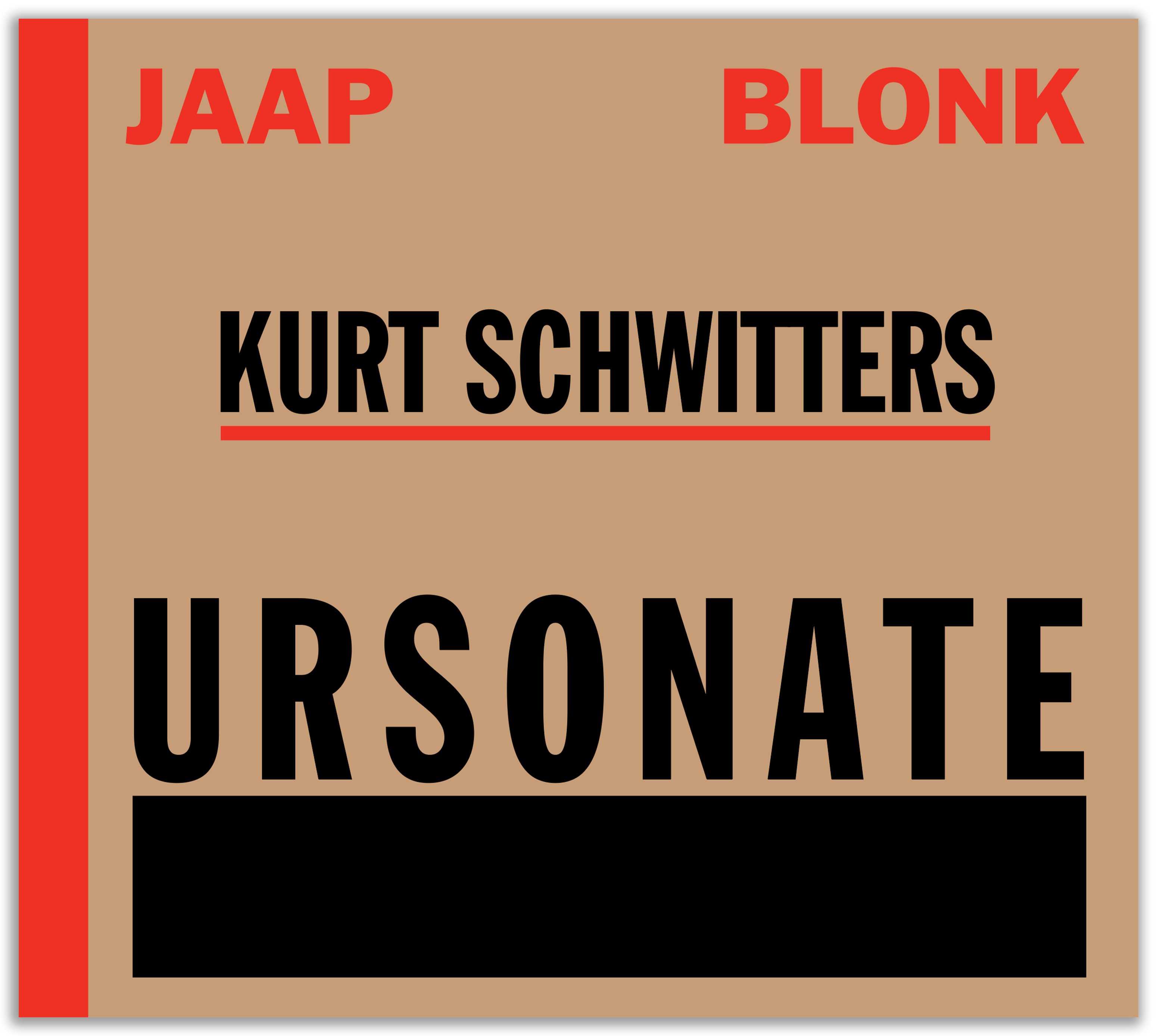
Kurt Schwitters / Jaap Blonk
Ursonate
Purchase HERE
Corbett vs. Dempsey is delighted to present Jaap Blonk, Ursonate, featuring the complete text-sound work by artist Kurt Schwitters. Blonk first recorded the canonical Dada poetry piece in 1986, released as an LP on BVHAAST, Willem Breuker's label. He has returned to the work multiple times over the ensuing decades, and this incredible new recording shows his deepening understanding of the pioneering work.
Blonk writes in the liner notes:
Kurt Schwitters (1887–1948) wrote his “Ursonate” or “Sonate in Urlauten” (“Primordial Sonata” or “Sonata in Primordial Sounds”) over ten years, from 1922 to 1932. During that period Schwitters tried out many preliminary parts in public poetry readings.
It became a 30-page work in invented words, which he later considered one of his two masterpieces (the other being the “Merzbau” in his house in Hannover, destroyed in 1944).
The “Ursonate” has a structure similar to that of a classical sonata or symphony. It consists of four movements: Erster Teil (“first part”), Largo, Scherzo and Presto. After a short in- troduction, the first movement opens with an exposition of its four main themes (subjects), each of which is subsequently “developed” (development in the sense it is used in classi- cal sonata form), leading to a coda. It is note- worthy that the theme exposition returns as a reprise before each new development but the last one. Both the Largo and the Scher- zo have a centered (A-B-A) construction in which the middle part contrasts with the two identical outer parts. The Presto has a strict rhythm broken only by a few interjections from the first movement and the Scherzo. Like the first movement, it follows the sonata form: exposition (repeated immediately in this case), development, and recapitulation. Next is the Kadenz, leaving the reciter free to choose between the written version and his own. However, in his written instructions for future performers of the piece, Schwitters says that he wrote his cadenza only for those among them who “had no imagination.” In my performances of the “Ursonate,” I always create an improvised cadenza on the basis of the sonata’s thematic material. Only on the recordings I have issued, for reasons of completeness, a recording of the written cadenza is included as a separate track. As a Coda, Schwitters uses one of his earliest Dada poems: the German alphabet read backwards, here repeated three times with different tempo and intention.
In February of 1979, I happened to hear Schwitters’ “Ursonate” read by a student of the Arnhem Drama School, at a poetry event in that city. The piece was quite a revelation to me, and with no delay I looked up the piece in Schwitters’ collected works at the Utrecht University Library and made photo- copies of it. At the time, however, I had no intention at all to be a voice performer. I had begun composing pieces of instrumental music. The “Ursonate” was on a shelf in my room and, every once in a while, I took it out and read sections of it aloud. This went on for about two-and-a-half years, and by the fall of 1981 I realized that I almost knew the piece by heart. Looking back at this from a much later time, I am very much aware of the ben- efits of this slow process of internalizing the piece. I gradually and intuitively formed my own interpretation of it, without any pressure from outside and without any knowledge of versions of it by other performers.
- Erster Teil (10:11)
- Largo (03:05)
- Scherzo (03:24)
- Presto (10:41)
- Kadenz (02:21)
Recorded by Kasper Frenkel at Electric Monkey Studio, Zaandam, Netherlands, February 13, 2024. “Kadenz” recorded at home on October 20, 2024, by Jaap Blonk.
Mastered by Jaap Blonk.
Back cover: Photo by Jazz Explorer (2024). Foldover panel: Photo by Arthur Nieuwenhuijs (1986).
Design by David Khan-Giordano.
CD produced by John Corbett.
